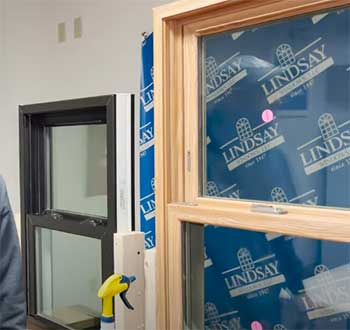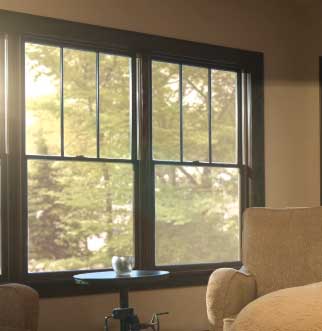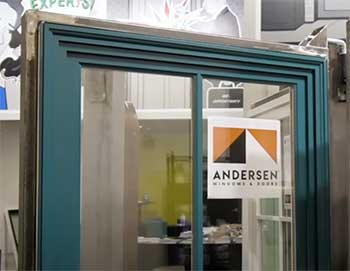If you’re in the market for new windows, Lindsay and Andersen are two brands you’ll likely encounter. Both companies have been around for decades and offer a wide selection of window styles and materials.
But there are some key differences between Lindsay and Andersen when it comes to performance, aesthetics, and cost. This guide examines the pros and cons of both brands to help you decide which is best for your home.
A Brief Comparison Table
| Factor | Lindsay Windows | Andersen Windows |
| Frame Materials | Vinyl, aluminum | Vinyl, fiberglass, wood/fibrex, aluminum clad |
| Window Styles | Contemporary, narrowline | Traditional architectural, contemporary |
| Glass Options | Basic to high-performance | Basic to high-performance |
| Weather Resistance | Good with upgrades | Excellent with upgrades |
| Smart Home Features | Limited | Extensive integrations |
| Warranty | Lifetime limited | Lifetime limited, transferable |
| Price Range | $250 – $1,500 per window | $400 – $2,500 per window |
| Manufacturing Location | North Mankato, Minnesota | Bayport, Minnesota |
Key Takeaways:
- Lindsay offers more affordable contemporary-styled vinyl and aluminum windows.
- Andersen provides premium traditional architectural styling with extensive customization.
- Both brands offer good warranties and manufacturing in the USA.
- Andersen has more smart home integration options available.
- Lindsay focuses on sleek, narrowline modern window aesthetics.
- Andersen has exceptional engineering quality with higher prices.
- Assess your budget, design preferences, and performance needs when deciding.
- Proper installation by professionals is key to ensuring window longevity.
- Both Lindsay and Andersen are excellent options – the right choice depends on your home goals.
Overview of Lindsay Windows

Founded in 1947, Lindsay Windows is one of the larger specialty window manufacturers in the United States.
The company offers vinyl, aluminum, and wood window products for both residential and commercial applications.
Lindsay is known for making high-quality, energy efficient windows with sleek contemporary styling.
Some of the key features and benefits of Lindsay windows include:
- Vinyl and aluminum frames that are durable and low-maintenance.
- EnergyStar certified options that meet strict performance guidelines for insulating value.
- Sleek, narrowline frame designs for a modern aesthetic.
- Customizable options like exterior color, hardware finish, and glass types.
- Lifetime limited warranty on vinyl and aluminum products.
- Made in the USA at their manufacturing facility in North Mankato, MN.
Overall, Lindsay windows are a great option if you want stylish, contemporary windows with very good energy efficiency. They offer flexibility for custom styling while being backed by solid warranties.
Overview of Andersen Windows
Founded in 1903, Andersen is among the oldest and most recognized window brands in America. They offer vinyl, wood, aluminum clad, and fiberglass window and patio door products for residential and commercial use. Andersen is considered a premium brand and focuses on high-end architectural styles.
Some key features and benefits of Andersen windows:

- State-of-the-art engineering for structural integrity and energy efficiency. Most meet EnergyStar requirements.
- Many classic architectural style options not offered by Lindsay.
- Fibrex material combines the strength of wood and low-maintenance of vinyl.
- Customizable options for exterior color, hardware, art glass, and other upgrades.
- Limited lifetime warranty on products and glass units.
- Made in the USA at their manufacturing facility in Bayport, MN.
Overall, Andersen windows are an excellent choice if you favor traditional architectural styling and want exceptional performance and durability.
Expect to pay more for the premium Andersen brand.
Comparing Window Materials
One of the biggest differences between Lindsay and Andersen is the variety of frame materials offered.
- Vinyl – The most affordable and lowest maintenance option. Lindsay and Andersen both offer vinyl windows in a range of colors. Vinyl provides good insulation and durability.
- Aluminum – A very durable but less insulating option. Lindsay focuses more on aluminum windows while Andersen uses aluminum cladding primarily.
- Wood – Beautiful but requires regular maintenance. Mostly used for interior luxury windows or exterior clad windows. Andersen is known for their wood window craftsmanship.
- Fibrex – Andersen’s proprietary composite blending wood fibers and vinyl. Provides warmth of wood with low maintenance.
- Fiberglass – A strong, durable material used for Andersen’s highest-end window lines. Excellent thermal performance.
When choosing frame materials, consider your budget, aesthetic preferences, and energy efficiency needs. Vinyl or clad wood/fiberglass frames are ideal for most homes.
Window Style and Design Options
Both Lindsay and Andersen offer many standard and custom window styles.
Some of the most popular options:
- Casement – Hinged side-opening windows. Excellent air circulation when open.
- Double Hung – Vertical sash windows that lift up and down. Classic style.
- Gliding – Horizontal sliding window panes. Space-efficient option.
- Awning – Top-hinged windows that open outwards. Keep rain out when partially open.
- Specialty Shape – Custom arched, rounded, or angled windows. Add unique character.
Lindsay focuses more on sleek, narrowline contemporary designs while Andersen offers those styles plus more ornate architectural shapes. Both allow for custom sizing.
When selecting windows, consider your home’s architecture and layout. Combine different styles to achieve the right aesthetic balance.
Glass Options
The type of glass used in the window unit impacts appearance, efficiency, durability, and cost.
Lindsay and Andersen both offer basic clear glass options as well as upgrades like:
- Low-E – Microscopically thin metallic coating to reduce heat loss.
- Argon Gas Fill – Argon gas between glass panes adds insulation.
- Triple Pane – Three panes of glass instead of two reduce heat transfer.
- Obscure – Frosted or pebbled glass for privacy.
- Laminated – Strong layered glass for security and soundproofing.
- Smart Glass – Glass that can switch between clear and frosted electronically.
When selecting glass, consider energy priorities, security concerns, and visual preferences. Low-E with argon gas fill provides excellent efficiency at moderate cost.
Weather Resistance Features
Living in an extreme climate? Choose windows optimized for weather protection.
Key features that boost weather resistance:
- Weatherstripping – Prevents air and water infiltration around sashes.
- Reinforced frames – Added structural strength resists wind damage.
- sloped sill – Angled bottom trim whisks water away quickly.
- Triple weathersealing – Multiple lines of defense against the elements.
- Concealed weep holes – Hidden drainage system prevents leaks.
Both Lindsay and Andersen makes windows suitable for extreme weather when these features are added. Coastal regions often require impact-resistant glass. Choose options specifically engineered to meet regional code requirements.
Smart Home Integration
For the ultimate in windows, consider electronic features that add convenience and control. Options like:
- Motorized windows controlled by remote, voice, or app. Open and close with ease!
- Integrated sensors to monitor air quality, security, temperature.
- Battery backup during power outages to keep windows operating.
- Smart glass that tints electronically for privacy or climate control.
- Automatic opening/closing triggered by time of day or weather conditions.
Andersen offers the most smart window options through their VeriLock Security Sensors and TrueView Smart Windows lines. Adding electronic features takes windows to the next level!
Warranties and Customer Service
When investing in new windows, you want reassurance they will perform as expected long-term. Both Lindsay and Andersen back their products with industry-leading warranties.
Lindsay Windows Warranty Highlights:
- Lifetime limited warranty on vinyl and aluminum window products.
- 20-year glass coverage including seals, extrusion defects, and stress cracks.
- 5-year coverage of door slabs.
- Non-transferable warranties.
Andersen Windows Warranty Highlights:
- Limited lifetime warranty on most window and door products.
- 20-year coverage on glass seals, spacer, laminates, and exterior finishes.
- Transferable warranties to new homeowners.
Read through full warranty terms before purchasing. In general, both companies stand behind their window quality and have good reputations for honoring warranties.
Pricing and Installation Cost Considerations
Window pricing depends on size, style, materials, and features. On average, expect to pay:**
Lindsay:
- Vinyl Windows: $250 – $800 per window
- Aluminum Windows: $600 – $1,500 per window
Andersen:

- Vinyl Windows: $400 – $1,000 per window
- Wood/Fibrex Windows: $800 – $2,000 per window
- Aluminum Clad Windows: $1,000 – $2,500 per window
Always get an exact quote tailored to your project. Complex custom designs cost more.
Hiring professional installers adds $200 – $500 per window depending on size.
Andersen costs notably more than Lindsay, but the premium materials and craftsmanship justify the investment for many homeowners.
Making The Right Choice
When comparing Lindsay vs Andersen windows, the right choice comes down to your priorities:
Lindsay is ideal if you want:
- Affordable vinyl and aluminum windows
- Sleek, narrowline contemporary aesthetics
- Good overall performance and warranties
- Made in America products
Andersen is best if you want:
- Top tier engineering and construction quality
- Expansive style and customization offerings
- Prestige of a premium brand name
- Exceptional weather resistance and durability
Frequently Asked Questions (FAQ)
The main differences are price, material options, window styles, and brand reputation. Andersen is a premium brand with higher prices but outstanding quality and luxury options. Lindsay offers more affordable vinyl and aluminum windows in contemporary styles.
Some window brands comparable to Andersen’s quality and performance include Pella, Marvin, Milgard, Simonton, and Jeld-Wen. But no brand offers an exact match to Andersen’s product depth and brand prestige.
Pella is considered Andersen’s biggest competitor in the premium windows market. Both are highly respected older American brands offering high-end architectural styles. But Andersen’s product range is much wider.
Lindsay focuses on vinyl and aluminum window construction. They use premium quality vinyl formulations and aluminum extrusion techniques. Both materials deliver durability and low maintenance.
Final Thoughts
Carefully review the window features that matter most to your home and lifestyle. This ensures you select the brand that is the best match for your needs and budget.
With proper installation, both Lindsay and Andersen windows deliver lasting performance, energy savings, and beauty.
